Kale, with its frilly leaves and rich colors, is a gorgeous plant. Although officially a “dark leafy green,” it also comes in vibrant purples and dramatic winter whites. And kale’s beauty runs deep: It is packed with powerful phytonutrients, minerals and fiber.
Kale’s complex flavor wins it fans at breakfast, lunch and dinner. It boasts deep, earthy flavors that can range from rich and meaty to herbaceous and slightly bitter. It tastes supremely healthy — in a good way.
What Is Kale?
Kale belongs to the Brassica family, which also includes cabbage, broccoli, cauliflower, Brussels sprouts, kohlrabi and collards. It is an offshoot of wild cabbage, which originated in Asia Minor.
The ancient Greeks and Romans grew kale in their gardens. Europeans brought kale to the Americas in the 1600s. During WWII, it was a recommended plant for Victory Gardens because it provided so many nutrients. And today, this leafy green is enjoying a revival, particularly among the health-inclined.
Kale is easy to find, and it’s a cinch to work into virtually any style of cooking. Read on for more about kale, as well as a few ways to start experimenting with it.
What Are the Health Benefits of Kale?
- Three servings of leafy greens each day has been found to slow cognitive loss by 40 percent.
- Kale is packed with phytochemicals like sulfur-containing glucosinolates and isothiocyanates that help ward off cancer.
- The fiber in kale helps absorb and sweep out DNA-damaging chemicals and other toxins that enter our bodies.
- Open-leafed plants in the cabbage family, like kale, have higher amounts of vitamins C and A and carotenoids than plants whose leaves don’t see the sun. Carotenoids are powerful antioxidants that also support proper functioning of the immune and reproductive systems and lower the risk of cataracts.
- Kale is an excellent source of minerals, including calcium, and manganese, a mineral the body requires for many physiological functions.
- One cup of kale provides 1,300 percent of the recommended daily allowance of vitamin K, which is important for healthy blood coagulation and maintaining bone mass.
What Are the Types of Kale?
A quick overview of the most common types of kale.
- Green Kale: With vibrant green wrinkly leaves, this is the most common kale found in grocery stores, and you can add it to just about anything!
- Red Kale: Similar in texture and flavor to leafy green kale, red varieties — which are actually more purple — add a splash of exotic color, whether raw or cooked.
- Tuscan Kale: Discovered in Italy in the 19th century, Tuscan kale (also called dinosaur kale or lacinato kale) has deep green, smooth stems and a rugged, wrinkly texture. It’s great for braising or sautéing and it’s terrific finely shredded and tossed into stir-fries.
- Ornamental Kale: Also known as salad savoy, ornamental kale — often green, purple, pink or white — is popular in flower gardens and makes a great garnish. But it’s edible too, as long as it hasn’t been sprayed with pesticides. It’s best harvested when still small and tender.
Shopping Tips
- For optimum nutrition, buy kale in season. A light frost sweetens kale, so depending on where you live, fall or winter is the perfect time to enjoy it.
- Choose kale from organic, biodynamic or responsible local growers when possible. Greens grown in better-managed soils help you net maximum flavor and nutrition and minimize exposure to pesticides.
- Whenever you shop for kale, buy lots of it because it cooks down dramatically.
- Keep blanched or precooked leftovers on hand to add to the week’s breakfasts, lunches and dinners.
How to Prepare Kale
- Blend a few chopped-up young kale leaves — but not the stems or very thick leaves — into fruit smoothies. It’s a great way to sneak greens into the diets of the veggie-averse, especially kids.
- Add kale to breakfast egg dishes. Try an omelet with par-cooked potatoes, caramelized onions and steamed kale — or a scramble made with tomatoes, bell peppers, green onion and kale sprinkled with feta cheese.
- Whip up a quick summer kale sauté with garlic, olive oil, tomatoes and basil. Sauté kale with small amounts of bacon for flavor, then lightly braise it in vegetable stock to soften. Great with roasted turkey, meatloaf or grilled tofu.
- Chop, cook and mix kale with grains to add nutrients and flavor to dishes like barley risotto or rice pilaf.
- Kale is wonderful in miso soup or tossed with rice noodles.
- Kale’s earthy flavor pairs well with hearty meats, beans and sausages. I particularly like kale with braised pork. I often substitute sautéed kale for cooked spinach in spanakopita, on pizza, or layered with ricotta cheese in calzone.
- Blanched and frozen kale is great to have on hand. If you gently break it in the bag, it can be easily added to simmering marinara sauce, soups, stews and beans.
Kitchen Tricks
- Washing: Avoid washing kale until just before use, since it will hasten spoilage.
- Cutting: To make cutting easier, remove any thick stems (just hold the kale upside down by the stems and pull the leaves off), then stack large greens on top of one another, roll them into tight bundles and slice into desired widths. The stems, finely chopped, can be used in soups.
- Blanching: Blanching reduces bitterness and softens thick greens, which is useful if you want to follow up with a quick sauté or freeze the greens for later use. To blanch kale, stir leaves into boiling water for a minute or two, drain, then immediately run under cold water.
- Braising: Braising tenderizes and adds flavor. To braise, slow cook 1 pound of greens in a ½ to ¾ cup of seasoned cooking liquid (chicken or vegetable stock or wine) or water for about 20 minutes or until greens are tender and ready to eat.
What Is Kale Good For?
- Blend a few chopped-up young kale leaves (but not the stems) into fruit smoothies. It’s a great way to get more greens into the diets of the veggie-averse, especially kids.
- Chop, cook and mix kale with grains to add nutrients and flavor to dishes like barley risotto or rice pilaf.
- Blanched and frozen kale can be crumbled into soups, stews, beans and pasta sauces.
- Substitute sautéed kale for cooked spinach in spanakopita, on pizza, or wherever you typically use greens.
- Whip up a quick summer kale sauté with garlic, olive oil, tomatoes and basil.
Kale Recipes
Crispy Kale Chips With Sea Salt
An indulgent side dish for dinner — or a healthier snack alternative to chips. Roasting brings out smoky, buttery flavors and creates an irresistible, melt-in-your-mouth texture.
Roasting to the point of crispness at high heat does involve some nutritional sacrifices, but it’s such a simple and delicious preparation (and one that has earned kale so many new fans), it’s worth making now and then. You can also cook longer at a lower temperature, if you prefer. And if you’re not afraid of fat, you can be more generous with the oil. For a twist, substitute Cajun spice or lemon pepper for the salt.
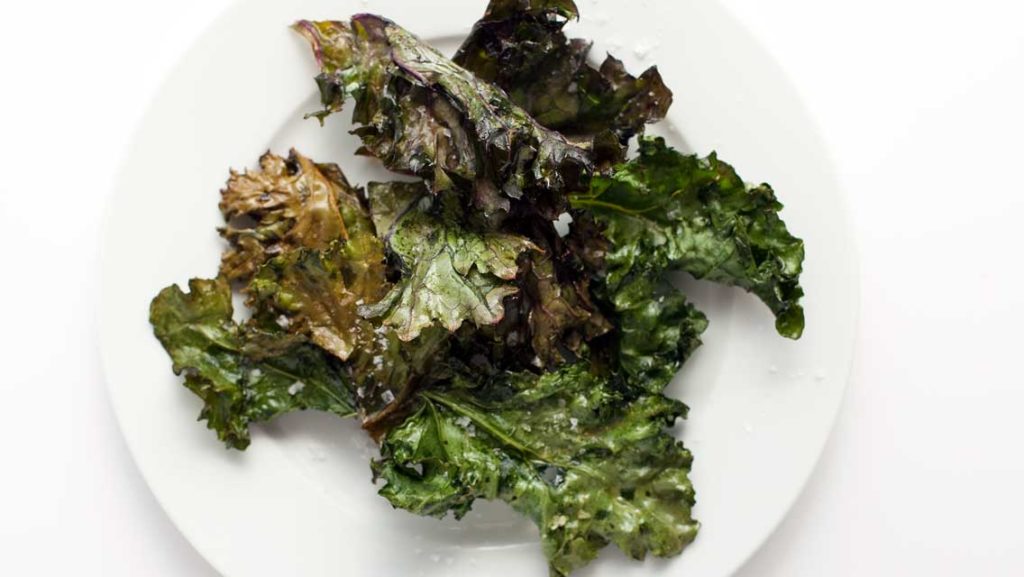
Serves two
Ingredients
- 4 cups kale (1 large bunch)
- 1 tbs. extra-virgin olive oil
- 1 tsp. sea salt
Directions
- Preheat oven to 375 degrees F. Line a baking sheet with parchment paper.
- Wash the kale. Fold each leaf in half and tear or cut out the tough stem, then stack and slice into manageable-size pieces.
- Toss pieces in a bowl with olive oil until coated, then arrange in a single layer on a baking sheet.
- Roast for five minutes, then turn carefully with metal tongs and roast another seven to 10 minutes until kale begins turning brown, crisp and brittle. Remove from oven and sprinkle with sea salt. Serve promptly.
Asian Greens
This quick sauté works well with kale or virtually any dark leafy green (spinach, Swiss chard, collards, dandelion greens, etc.) to create a healthy, delicious side dish. By varying the seasonings (subbing in chili-garlic sauce, curry paste or peanut sauce for the soy sauce, for example), you can create an eclectic array of variations. This basic preparation (sans seasonings) can also work to prep kale for using in other recipes, including a delicious egg scramble (see Web Extra for recipe). For another classic preparation, sauté kale with small amounts of bacon for flavor, then lightly braise in vegetable stock to soften.
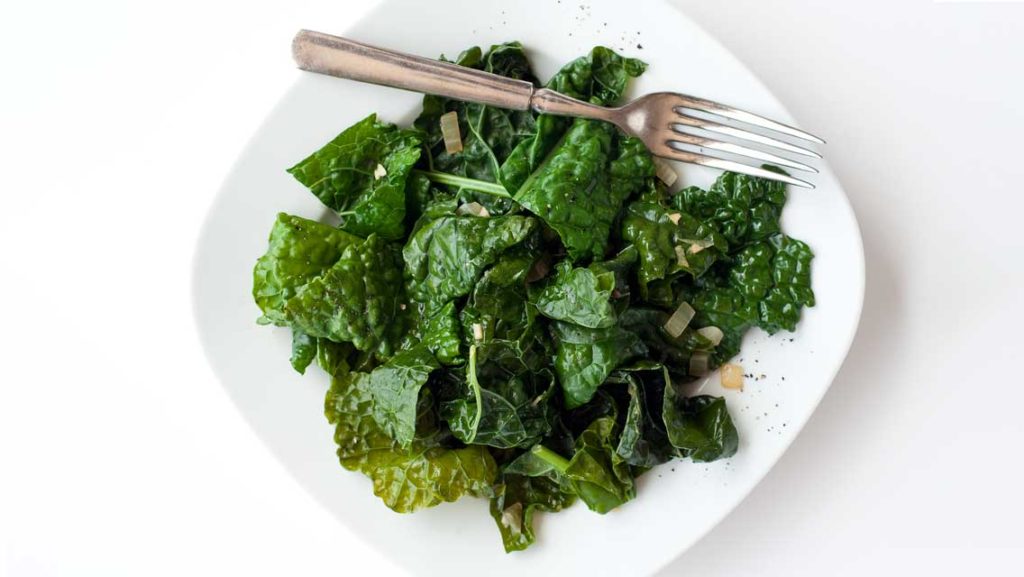
Serves eight
Ingredients
- 12 cups kale (3 large bunches)
- 1 tbs. sesame oil
- 1 cup diced yellow onions
- 2 tsp. minced fresh garlic
- 1 tsp. grated fresh ginger
- 2 cups vegetable stock
- 1 tbs. tamari soy sauce
- 1/8 tsp. ground black pepper
Directions
- Wash kale, remove stems and cut into 1-inch squares.
- Heat a large sauté pan over medium-high heat and add the olive oil to just coat the bottom of the pan. Add onions and garlic and sauté for one to two minutes. Stir in kale, ginger and vegetable stock.
- Cook until the kale starts to wilt, about two minutes. Stir in tamari soy sauce and pepper. Remove from heat and serve.
Raw Kale Salad
Combining finely chopped kale with lemon and olive oil — then gently massaging them together — breaks down kale’s stiffness and bitterness, leaving you with tender greens bursting with flavor. Don’t skimp on the chopping: Not having to chew through large chunks of raw kale will increase your eating pleasure.
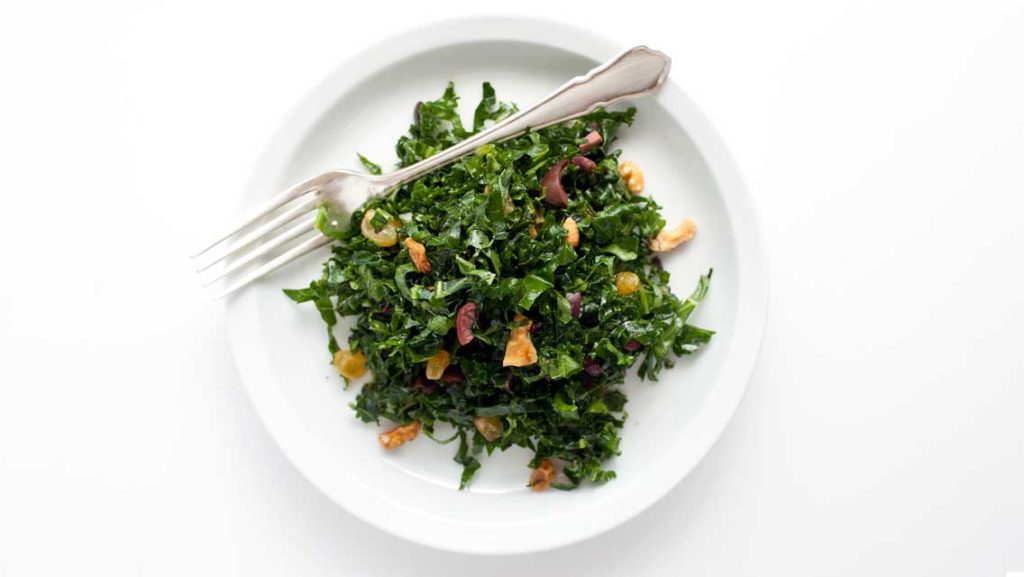
Serves four
Ingredients
- 1 large bunch of kale, stems removed and thinly sliced
- 1/4 cup lemon juice
- 1/4 cup olive oil
- 1 minced garlic clove
- 1/8 tsp. sea salt
- 1/4 cup toasted walnuts
- 1/2 cup golden raisins
- 1/2 cup chopped kalamata olives
- 1 tbs. finely shredded basil
Directions
- Place the kale in mixing bowl. Add the lemon juice, oil, garlic and salt. Massage the kale to soften for about one minute.
- Add remaining ingredients and toss to combine.
- Allow the salad to rest and soften for about 15 minutes before serving.
Kale, Mushroom and Cream Cheese Scramble
Conscious Cuisine®
Sautéed, steamed or braised kale (especially refrigerated leftovers) is an easy and delectable addition to your breakfast eggs — or just about any other meal.
Serves one
- 1/2 tsp. olive oil
- 1/4 cup julienned kale
- 1/4 cup diced fresh shiitake mushrooms
- 1 tbs. finely chopped green onion
- 1/4 cup small diced tomatoes
- 2 eggs, lightly whipped
- 1 tbs. milk
- 1/8 tsp. sea salt
- 1/8 tsp. freshly ground black pepper
- 1 tbs. cream cheese
Directions
- Heat a sauté pan over medium heat and add olive oil. Add vegetables and sauté until they begin to sweat, about five minutes.
- Whip the eggs with the milk and season with salt and pepper. Slowly pour into the pan with vegetables. With a heat-resistant spatula, gently push one edge of the egg into the center of the pan, while tilting the pan to allow the uncooked egg to flow in underneath. Repeat with the other edges, until there’s no liquid left.
- Turn off the heat and add the cream cheese, gently stirring and turning the egg until all the uncooked parts become firm. Place on plate and serve with fresh fruit.
This article has been updated. It originally appeared in the September 2010 issue of Experience Life magazine.

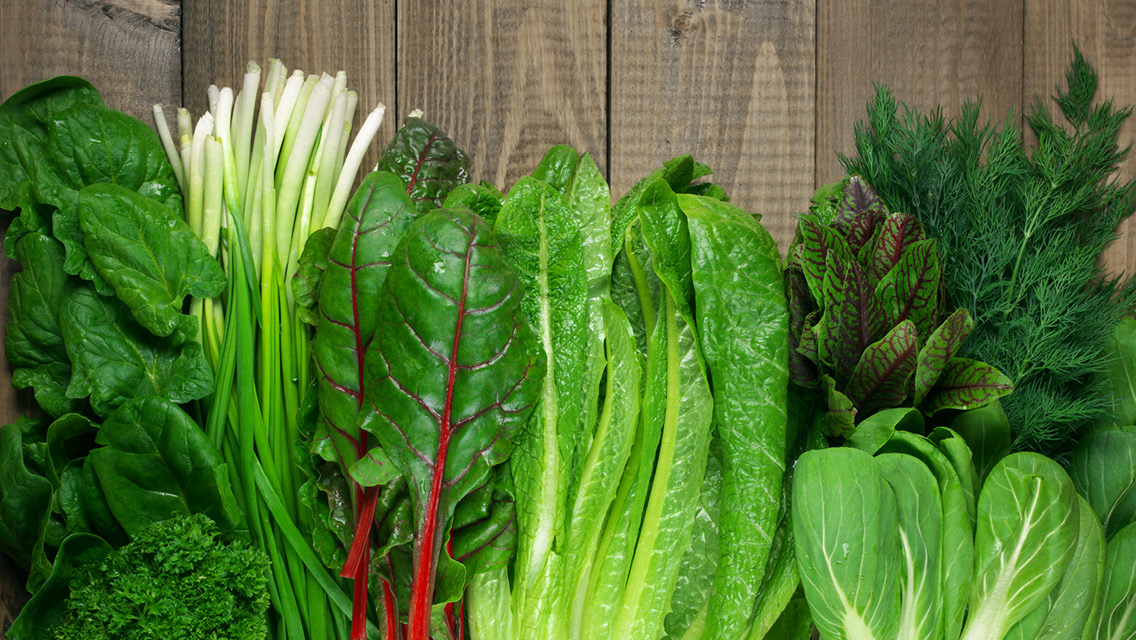
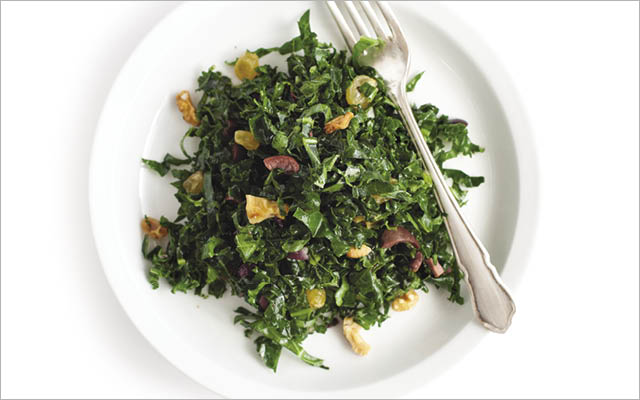
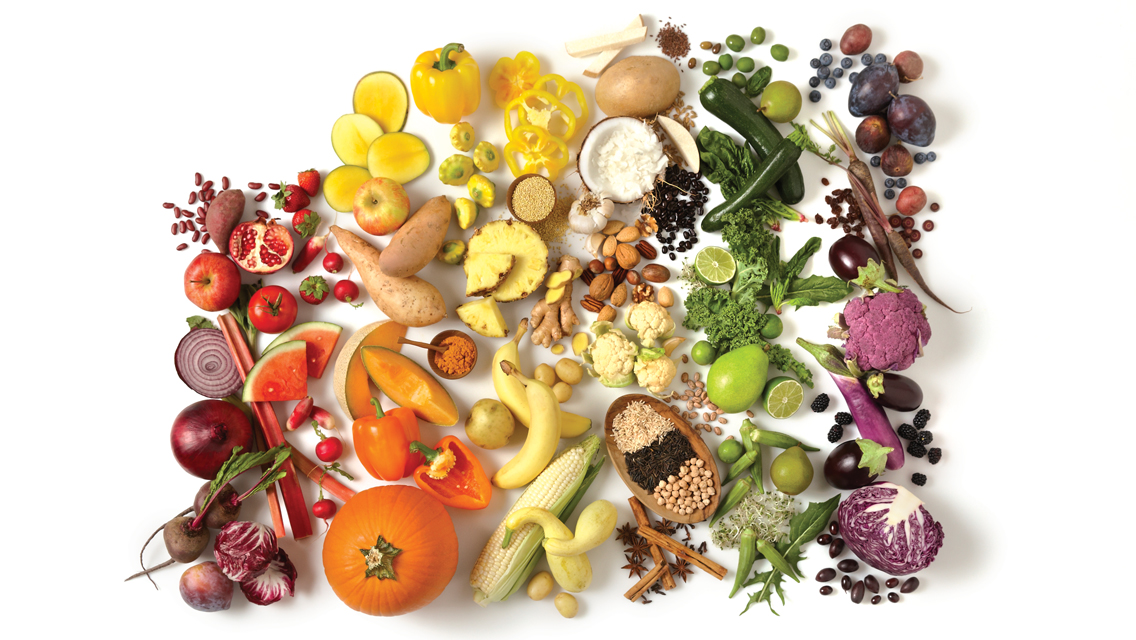
This Post Has 0 Comments